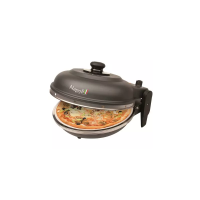Once you have aligned the template correctly, trace the shape of
the template onto the shell and remove the template. Now get the
tin cutter or saw with the breglass cutting blade and cut away. You
may need to trim the form slightly to get a good t. Again, make sure
you use the special bre glass sawblade if you use a jig saw.
Now mount the rear fairing arch to the holes near the rear dropouts
on the frame, making sure to place a spacer between both the bolt
and arch, and arch and frame. Check that the bolt on the right hand
(derailleur and cogset) side does not scrape against the cassette
or interfere with shifting in any way. Also make sure that the arch
is well centred over the rear wheel. Remove and bend the arch if it
is not properly centred.
Drill one hole in the back of your seat using a 6mm drill bit,
approximately 5cm (2 inches) from the top of the seat, along its centreline.
Now that you have your drill handy, proceed to drill a hole in the top of the
fairing, approximately 32cm (12.5 in) from the seat side of the top ridge of
the shell. Use this hole to attach the fairing to the rear fairing support arch,
using the nut, washer, rubber spacer and low prole bolt provided. Place
the rubber spacer between the fairing and the top of the wheel arch. (See
g 20.2) All connections between the cowling and xture points should use
the included rubber spacers, between the inner side of the shell and the
xation point. Always place a rubber spacer between objects to be connected
to the fairing and the fairing itself.
You will need one of two tools to cut the form out: a Jig saw or a tin cutter. If you don’t have
either of these tools we suggest you buy or rent one. If you use a jig saw, you must use a
special breglass saw on it, or the polyester of the fairing will spit and crack from the vibrations
created by cutting the fairing. This may all cost more, but it will cost less than ordering a new
fairing and the results will be much more satisfying in the long run. You will also need a pair of
safety glasses, gloves and preferably a long sleeve top and
long pants: Polyester shards are sharp and when they get
into your skin, they can cause a rash and irritation that could
last for about 10 days. Not protecting yourself whilst working
is foolish, and the chances are high you will wish you had
followed these guidelines after working if you don’t.
20
Fig 20.2
Fig 20.1 Jig saw & tin cutter
Be sure to nd one of these: a composite / bre glass saw blade
Once you have found a comfortable position, (nd someone to help you
here if possible) mark the position that the hole for the bolt is against
the underside of the fairing, using a sharp implement or paint marker (g
21.2). You will need to reach you hand back up inside the cowling to do
this. Make sure the upper bolt is tightly fastened so that the attachment
plate doesn’t move. Now ip the cowling back and use a sharp implement
or a paint marker to mark one of the lower bolt hole on the seat plate’s
position against the seat. Drill a hole in both the cowling and the position
you marked on the seat, and fasten both points using the bolts and rubber
spacers provided. Drill the second hole you marked in the base of the
seat now and fasten the top plate properly.
Now that you have the fairing xed to the wheel arch and seat, it is time to drill and x it to
the bottom of the seat. Do this by aligning the lower arms of the fairing to the underside of
the seat and tape the bottom of the fairing to the seat securely making sure that the wheel
does not scrape against the back end of the fairing in doing so. Now drill a hole through
both the fairing and the seat from the bottom up (g 21.3). Attach the lower sides to the seat
using the low prole bolts, rubber spacer and bolts provided. You may now need to trim the
fairing to allow wheel clearance (g 21.1).
That’s it – your aerodynamic fairing is installed!
Make sure you put your seat all the way back again, attach the cushion to the seat, and sit
down on the bike. If anyone else is round now would be a good time to ask for a little help.
Fix the seat attachment plate to the seat using the included rubber spacers and washers.
The longer arm of the seat attachment plate should be bolted to the hole you drilled in the
seat. Swing the cowling, now attached to its arch, down onto the plate, and start adjusting
the cowlings vertical and horizontal position by moving the seat plate up and down. Set
up the height and horizontal position of the fairing so that it ts ush to your shoulders just
behind their peak, making sure the t as close as it possibly can be. Make sure the seat
cushion is on the seat during this adjustment, otherwise you will be setting the fairing up too
low and it will be less comfortable and less effective.
21

